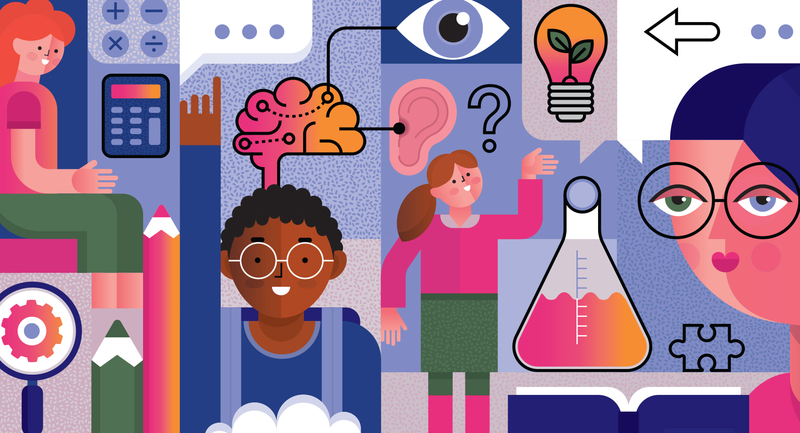My son’s middle school band room is magic. From the welcome mat with its jaunty message—“Yay, you’re here!”—to the gazillion trophies lining the cabinets, to the kids lingering and chatting happily after class has ended, the message is clear: Everyone has a place here. Everyone belongs.
But it’s not just the warmth, not just the beaming smile Ms. Hitz gives each student that makes them feel like their arrival is literally the best thing that’s happened to her all day. In addition to the positive messaging, Ms. Hitz expects excellence and effort from her students. She doesn’t just want students to hit the right notes; she expects them to be musicians. Whether it’s a tip about shifting a fingering, or a reminder about counting beats, there is constant high-level teaching going on. Gentle but firm encouragement to try new things, to think critically. “Do this measure again and look at it carefully.” “Music is a lot like math, isn’t it?” “You’ve already got these skills. Let’s put them together here.”
Carol Ann Tomlinson’s concept of “teaching up,” which helped inspire this issue of EL, really clicked for me when I thought about Ms. Hitz in that magic band room. What I realized is that none of those techniques are “magic.” Teaching up—an instructional approach for providing students with equitable access to challenging learning opportunities, along with the scaffolding they need to be successful—is a very real, smart, and deliberate strategy. It is predicated on a simple but powerful belief that every student can and should succeed if given the right tools to do so. It’s an authentic approach that not only says, “You belong here” but “You’re great, and you can become even greater.”
Part of it is classroom culture, of course. Students aren’t going to want to try if they don’t feel safe, if they don’t feel they belong, or if they don’t think their teacher believes in them. The key to teaching up, as Tomlinson writes, is for educators to intentionally “think, plan, and teach as though every learner in [the] class is ‘smart.’” With that mindset, educators provide the conditions for higher levels of engagement and meaningful learning.
Students aren’t going to want to try if they don’t feel safe, if they don’t feel they belong, or if they don’t think their teacher believes in them.
Tomlinson stresses that there is “no single right way to begin this quest.” But the articles in this issue offer many strategies and starting points, including:
- Giving students the chance to engage in, as Lee Ann Jung writes, “productive struggle”— an “effortful process of grappling with challenging tasks” that is “essential for deep learning and growing self-efficacy.”
- Using evidence-based strategies to help struggling students and “systematically building students’ background and content knowledge” across all subject areas, as Lynne Munson notes.
- Encouraging and modeling positive self-talk, which Jennifer Mangels says can foster students’ self-assurance, efficacy, perseverance, and problem-solving acuity.
Teaching up not only makes students believe in their potential, but it also reinforces their place in school as highly capable and unique learners. This kind of teaching may not be magic, but it creates magical experiences for students.








